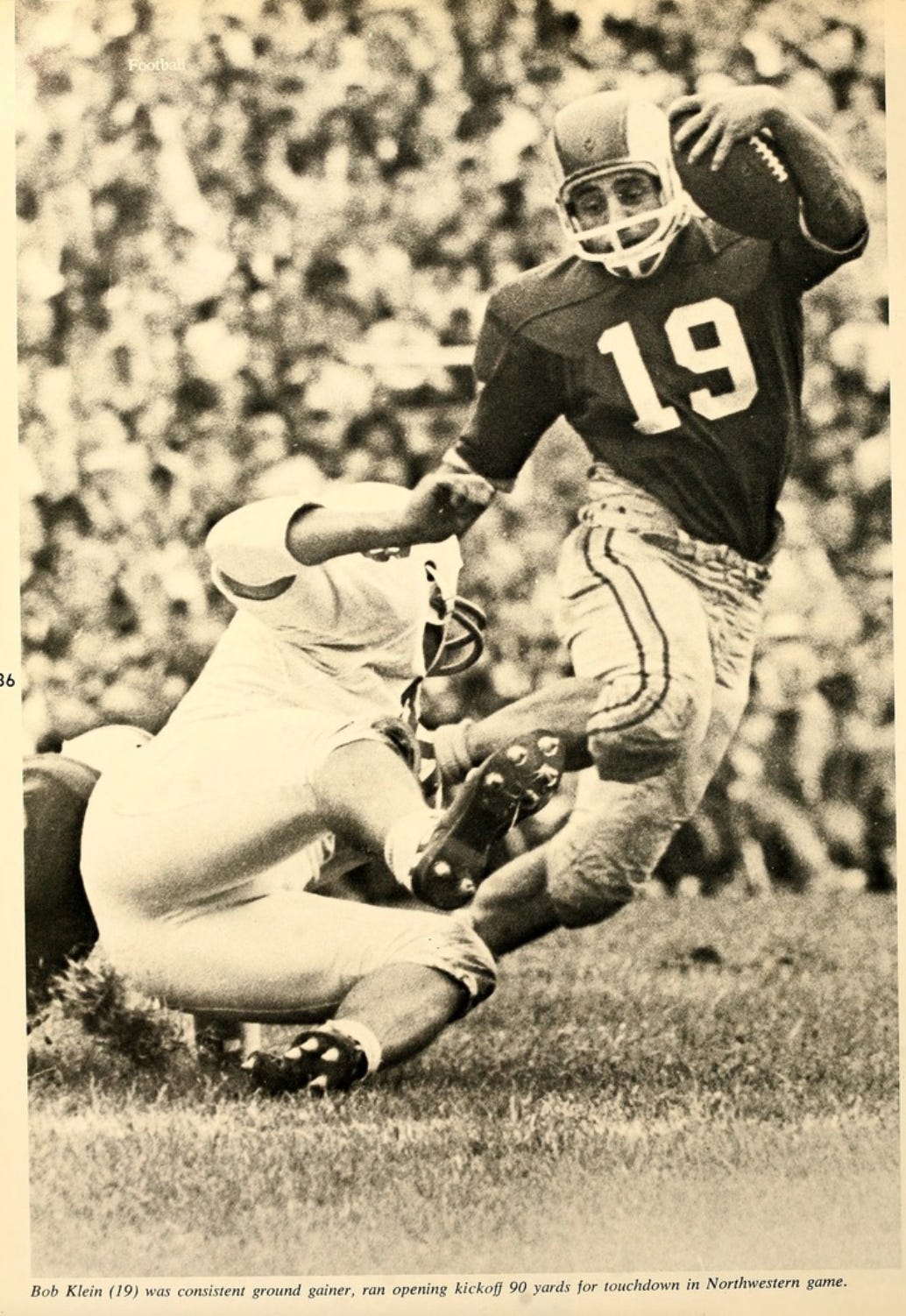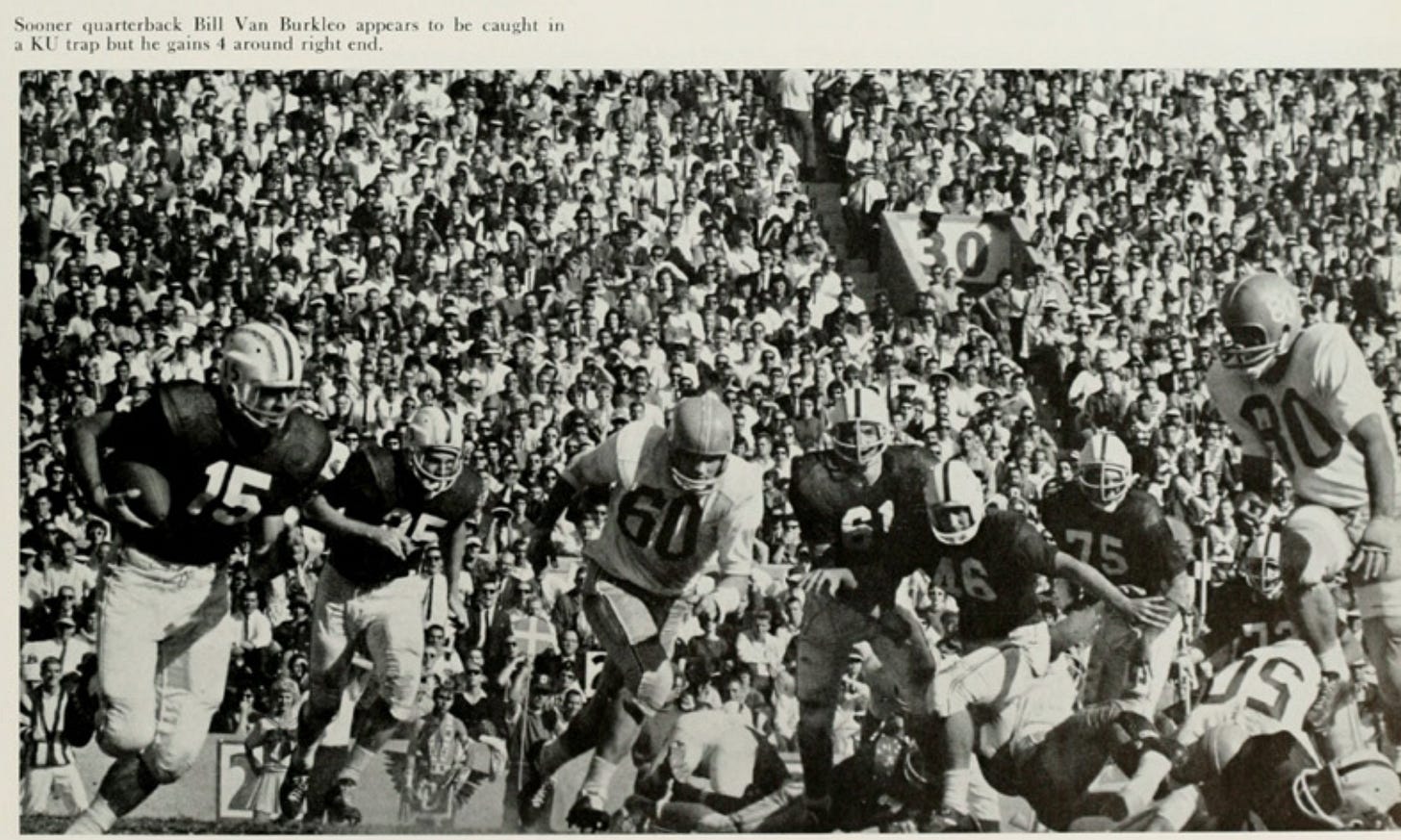Today's Tidbit... Absorblo, the 1960s Helmet Exterior Padding
Recent seasons have seen a reemergence of teams wearing exterior padding on their helmets during practice. The Guardian brand, which won the NFL's HeadHealth TECH award in 2017, provides helmet covers to teams at all levels. An example of their product is below.
Of course, this is not the first rodeo for exterior helmet padding. It has been part of the game since the first winged helmets arrived in 1930. Like those that appear on Michigan's helmets today, the original wings were more than decorations. They were stylized pads added to the forehead to provide additional protection.
The ProCaps of the 1980s and 1990s also had their day. Mark Kelso of the Buffalo Bills and Steve Wallace of the San Francisco 49ers wore ProCaps in games; Kelso did so after his fourth concussion.
Still, the focus here is on exterior padding developed in the 1950s at Cornell Aeronautical Laboratory. Funded by MacGregor, they wanted to create the safest helmet and investigated solutions on the inside and outside of the helmet shell. The available accounts show they developed or used new synthetic materials to create innovative helmets. Since MacGregor sponsored the research, they received first dibs on commercializing the products. Unfortunately, the helmets they put on the market were uncomfortable and did not sell well, so MacGregor designed new helmets that used some elements from the research lab and not others.
One element developed in the lab that MacGregor continued commercializing was external helmet padding. Cornell's football team, the guinea pigs for the research, began using these pads and, like the stylized wings from the 1930s, set off a minor fashion trend that shows up only as a throwback today. Following the research, Cornell added a wide strip of white Aborblo along the top of their red helmets, creating a distinct look that others adopted.

Initially, Cornell was the only team to use Absorblo on their helmets, but the material soon covered plastic shoulder pads and other equipment. MacGregor marketed a new line of helmets in the early 1960s with the safety-enhancing Absorblo strip, and many schools adopted it. The pad was one-half inch thick and continued sticking when applied to a helmet. Cornell painted theirs white, but what did others do as this safety measure spread? Ohio State pulled a 180 on Cornell with a red strip on a white base.
Duke went with a blue strip on a white base.

Speaking of Oklahoma, they added a center stripe, though the Absorblo strip’s three-dimensional effect sometimes made it appear like the helmet had another set of stripes.
Absorblo ran its course by the mid-1960s. Unfortunately, the cushion and absorbency it provided also meant that helmets remained in contact with certain materials longer than was the case with the smooth plastic exterior, so while they reduced the frequency of concussions, they may have contributed to other injuries.
The research costs to develop and test new helmet technologies and the onset of lawsuits against helmet manufacturers drove all but a few manufacturers from the market. As a result, whereas there were twenty-one football helmet manufacturers when the National Operating Committee on Standards for Athletic Equipment (NOCSAE) was created in 1970, there were only three by 1983.
Since then, helmet manufacturers have steered clear of external pads, leaving it to outsiders to venture into that territory.
Football Archaeology is reader-supported. Click here to buy one of my books or otherwise support the site.






